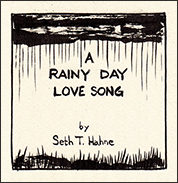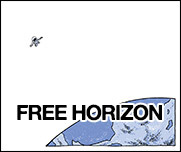Blue Is the Warmest Color
When I was a young and abysmally unprepared twenty-four-years old, I asked my girlfriend to marry me. She said something along the lines of Sure and Yeah and Okay. I haven’t mythologized either my proposal or her reply because nothing ever came of it. Somewhere around a year-and-a-half later, she broke it off and we went our own ways, some of us more reluctantly than others. There was no heat or fire to the self-destruction of our relationship. No fights, no rages, no untempered passions. Instead, our locations, circumstances, goals, dreams, and desires left us quietly alienating from each other. She realized it before I did. We were both, I think, made lonely by worlds that didn’t care for our needs so much as they cared for their own.
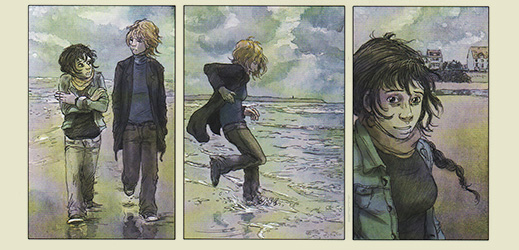
Maybe that’s the thing that gets in the way of every failed or failing relationship, the inability to find oneself truly at home in the company of another. That alienation leads to a crisp and lonely distance. A distancing, an active if gradual acceleration away from the place we hoped would be our comfort. And so, things fall apart, their gears and cogs made brittle by the frost of hollowed hopes and unfulfilled expectations. Love dies and its acolytes are left benumbed. Aliens in a land of waste and broken dreams. Julie Maroh’s Love Is the Warmest Color is this kind of story, the recollection of the very human inability to sustain oneself in the face of such alien-making forces.
The irony is that since being adapted into a relatively controversial film, Julie Maroh’s Blue Is the Warmest Color will unintentionally become exactly the thing its deceased protagonist, Clementine, is wholly destroyed by. Blue is about the struggle for love in the face of alienation—an alienation forged by some of the very things its cinematic form inculcates. And guided by a director’s hand and by confirmation bias, the large number of those who see the film (and perhaps of those who read the book) will mistake its purpose and play into the very influences that in the end ruin Clementine (or, for some reason, Adele in the film).
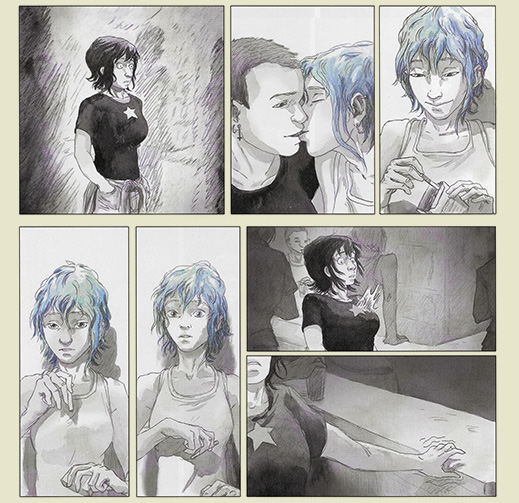
Blue Is the Warmest Color is an alright work that has, at its center, an interesting examination of a common story. Maroh begins with the posthumous narration of Clementine, first through a letter written to her partner-lover Emma, and subsequently through a series of diaries dating back fifteen years into Clementine’s teenage struggle for identity. And identity really is at the crux of all of the book’s ruminations—though plenty of readers won’t get it. Blue's domestic film rating of NC-17 for its long and intimate lesbian sex scenes will have people thinking Blue is about sex.11In France, the film is rated 12 (meaning twelve-year-olds can see the film just fine), playing perfectly into both the American stereotype of the French as libertines and the everywhere stereotype of the Americans as puritanical prudes. I haven’t seen the movie, so I’ll just have to trust that the director had a very good reason to turn a three-page sex scene into a seven-minute (apparent) tour de force. Readers who note how discomforted Clementine’s parents are by the presence of homosexual activity in their daughter’s life may mistake the book for a tract for tolerating sexual preferences—or maybe for an endorsement of homosexuality. Some have described the story as essentially anti-homosexuality, again by way of a bad-faith reading of Blue's direction and purpose.
Maroh’s work is not concerned with homosexuality at all. Neither is it about sex. Those elements are present but wholly in service to the book’s goal, a discussion of identity and how identity alienates. In the opening pages, Emma is trying to comfort Clementine’s grieving parents who still regard the lesbian Emma with repulsion and disgust. She speaks the most important line of the entire work, the one about which the whole remainder of the text revolves: “If I had been a guy, Clem would have fallen in love with me anyway.” We can’t be certain if Emma realizes the importance of her words, but by story’s end it becomes clear that Clem has never taken her identity from her sexual preference, if indeed she even has such a thing. Apart from what her parents, her lover, or her friends would have for Clementine, it’s in the nature of where Clem actually finds identity that Blue Is the Warmest Color is essentially concerned. And with the war between her identity and those others would force upon her.
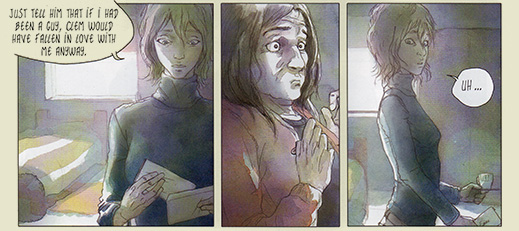
It’s always hard to judge an author through a translated work, hard to say anything substantial about Maroh’s gifts as a dialogist or a narratologist. So instead, we’ll talk briefly about the writing of the work as it arrives in English, through the hand of another. It works, I suppose, the words. Clementine’s diary entries are juvenile and overwrought, but that’s who she is, at least at the start.22Her entry that overlaps the depiction of her first sex with Emma:
You, you, you
There is only you
I love you
I love you
I love you
I love you
My God, her sex, her sex, naked against mine
I’m going to go crazy. I don’t want to live unless I can be with her Teenagers, for all their passion and fire, are among the least eloquent participants in the language of adult communication and that really comes across here. So, done accurately if not enjoyably. I had a hard time involving myself in Clem’s early crises because she was just so bad at helping me care. I remember, vaguely, what it was like when I was in highschool and how very important I thought everything going on with me was, so I know why Clem would think in the patterns she does. But the fact that I don’t respect who I was in highschool puts up a significant barrier between Clem and me.33More compassionate readers will likely become more invested in Clementine’s youthful plight. In any case, the story and the question it posits about identity are more engaging than any of the verbal writing.

Maroh’s artstyle is a kind of Westernized manga-grotesque. It appears amateurish, the kind of things the kids pour their hearts into and post on Tumblr, but that may just be intentional. Her figurework is stiff and gangly, but she makes good use of the elasticity of her character’s faces to convey a wide range of emotional content. While Maroh’s drawing is not yet to my taste, seeming to suffer a lack of confidence, I did appreciate her use of colour throughout to gently inform her storytelling.
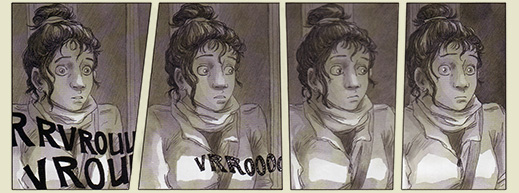
Despite my hesitancy to recommend the work on the strengths of its art and writing, Blue Is the Warmest Color does valuably investigate the question of who a person is. Rather than simply put together your typical bildungsroman about the sexual exploration of a young lesbian, Maroh gives us the interesting predicament of a non-homosexual woman (sexually involved with a woman) alienated by her social compass’ demand that she be offended by homosexuality and her lover’s demand that she support the homosexual movement. To a lesser degree, the book explores how the identities of both Emma and Clementine’s parents serve to alienate them from Clem’s love. A worthwhile book apart from its problems.
Good Ok Bad features reviews of comics, graphic novels, manga, et cetera using a rare and auspicious three-star rating system. Point systems are notoriously fiddly, so here it's been pared down to three simple possibilities:
3 Stars = Good
2 Stars = Ok
1 Star = Bad
I am Seth T. Hahne and these are my reviews.
Support me by buying my art on Etsy
Review copy submission may be facilitated via the Contact page.
Browse Reviews By
Other Features
- Popular Sections:
- All-Time Top 500
- All the Boardgames I've Played
- All the Anime Series I've Seen
- All the Animated Films I've Seen
- Top 75 by Female Creators
- Kids Recommendations
- Daily Recommendations
- What I Read: A Reading Log
- Best Books of the Year:
- Top 100 of 2020-22
- Top 75 of 2019
- Top 50 of 2018
- Top 75 of 2017
- Top 75 of 2016
- Top 75 of 2015
- Top 75 of 2014
- Top 35 of 2013
- Top 25 of 2012
- Top 10 of 2011
- Other Features:
- Why I ❤ Zita the Spacegirl
- 31 Days of Comics
- Bookclub Study Guides
- Sitemap













